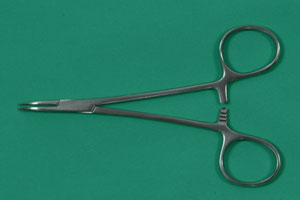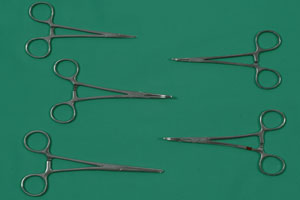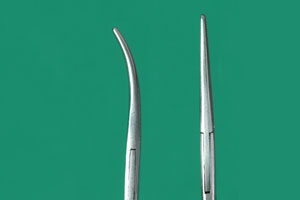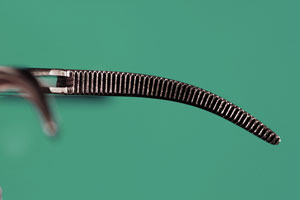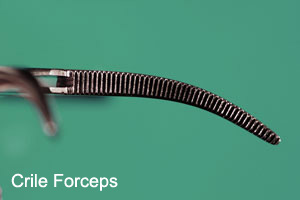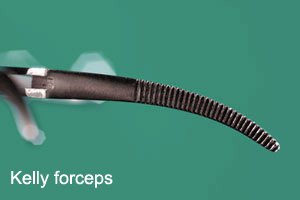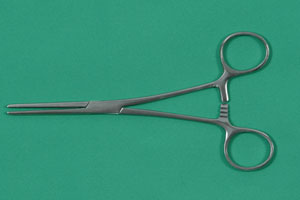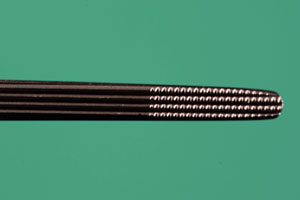Overview
Overview of Hemostatic Forceps
- used mainly to control hemorrhage from vessels
- crush tissues situated between jaws (tranumatic)
Skills to Practice
- wide-based tripod grip
- smooth opening and closing of the ratchet locking mechanism
- accurate placement of tips on the end of a "cut vessel"
- variety of sizes and designs
- most have a ringed handle design and ratchet locking mechanism
- tips can be curved or straight
- curved usually preferred as easier to see tip during placement
- need periodic examination to ensure tips meet, the jaws are aligned, and the ratchet locking mechanism is secure
Halstead mosquito hemostatic forceps
- used for pinpoint control of small bleeding vessels
- transverse interdigitating grooves present along entire length of jaws
- available with curved or straight tips
Kelly and Crile hemostatic forceps
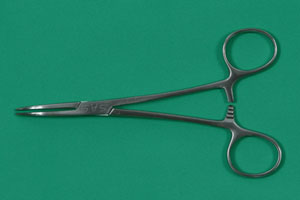
- larger, heavier hemostats
- used to grasp larger vessels or tissue
- transverse interdigitating striations present the entire jaw length on Crile hemostats, but only on the tips with Kelly hemostats
- available with curved or straight tips
Rochester-Carmalt forceps
- large crushing hemostatic forceps used for ligating pedicles
- long, wide jaws with longitudinal grooves with fine cross striations at the tip
- design provides a secure grasp of tissue with minimal potential for cutting the tissue during removal
Wide-based tripod grip
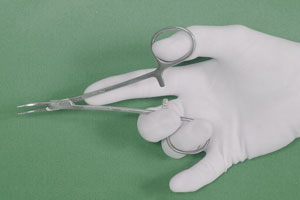
- hemostats are held like the needle holders and scissors with a wide-based tripod grip
- thumb and ring finger inserted in rings (tips only)
- index finger is placed at box lock to improve tip control
- middle finger rests on ring finger
- tip, when curved, follows natural curve of index finger (away from palm)
- grip facilitates maneuverability, manipulation of ratchet locking mechanism and easy finger extraction
-
Wide-based tripod grip

- hemostats are held like the needle holders and scissors with a wide-based tripod grip
- thumb and ring finger inserted in rings (tips only)
- index finger is placed at box lock to improve tip control
- middle finger rests on ring finger
- tip, when curved, follows natural curve of index finger (away from palm)
- grip facilitates maneuverability, manipulation of ratchet locking mechanism and easy finger extraction
-
